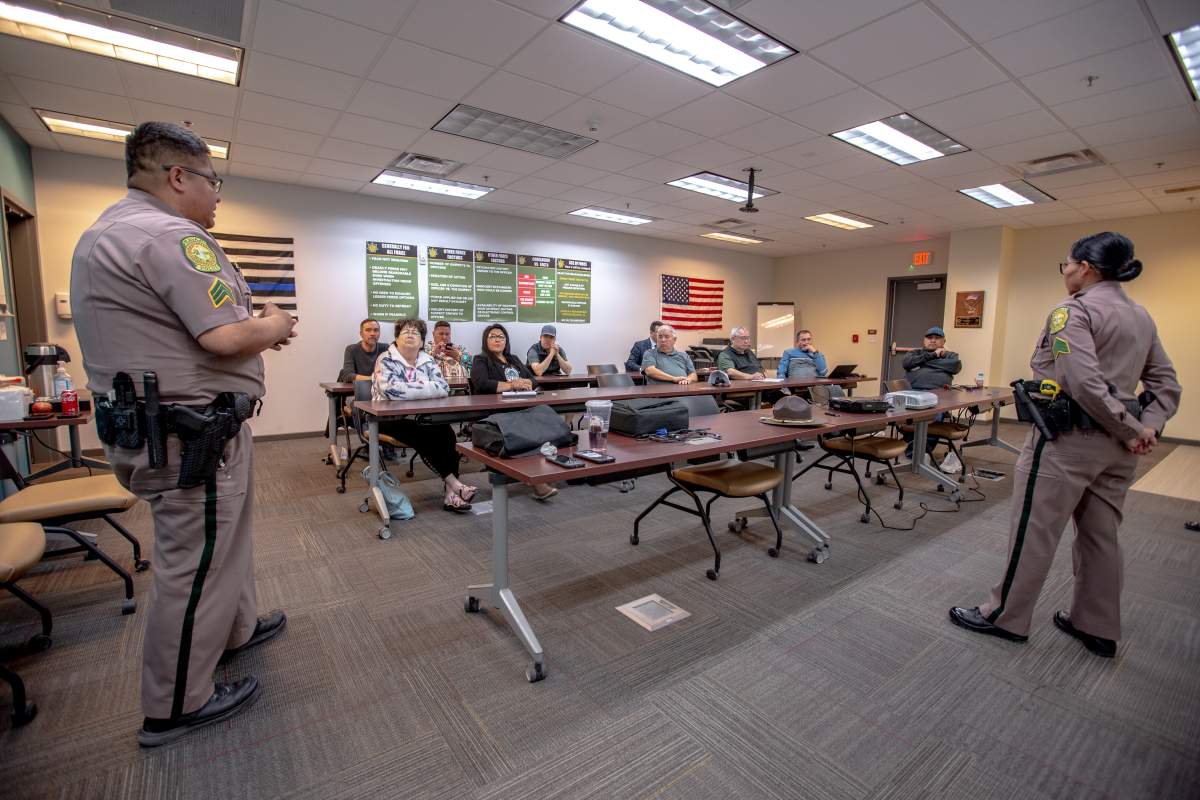Leaders from the Prince Albert Grand Council (PAGC) and its member nations recently returned from Chinle, Ariz., to learn about the practices of the Navajo Tribal Police.

The visit was recommended in PAGC’s 2019 report of First Nations policing to find solutions to challenges nations face in northern Saskatchewan.
“They said the communication part, in terms of speaking the language, when communicating certainly helps the Navajo Nation,” said Joseph Tsannie, Vice Chief with PAGC. “When they are policing their communities, it is that connection piece that we are looking for too.”
In a media release, Navajo Police Chief Daryl Noon said the visit was mutually beneficial.
“It was an honour to meet with the PAGC leaders and to reacquaint with our distant Dene relatives of whom we refer to as ‘the Other Entity’ in our Navajo language. Since the late 1800s we have established our own policing system, and we have experienced the unique challenges that come with it. We are proud to serve our community and help other Indigenous communities develop their own policing systems that aligns with their own cultural values and priorities,” said Chief Noon.
The Navajo Nation are part of the Dene community, which is why PAGC took a trip south of the border instead of visiting a different nation in Canada.

Get breaking National news
“We have Dene communities within the province, and they have been doing the self-administered policing at the Navajo Nation for 400,000 plus members within the Nation and they were in partnership with the state and the federal government.”
The Navajo Nation’s police force is the only tribal police force in the United States that trains its own officers. They also have emergency management officers, special forces, and emergency medical services under the umbrella of Navajo public safety components.
Along with the public safety and police departments, the detention centre, and judicial courts are on the same property.
“That model is very attractive to our communities,” said Tsannie. “We talk about jurisdiction, and we talk about reconciliation. Why not give the opportunity to build our capacity to keep our community safe.”
PAGC said it wants to create new training programs that align with the community.
“We need to start thinking about the people that are out there. We have a lot of young students who are graduating school and looking for opportunities,” said Tsannie.
Twenty-eight First Nations in Saskatchewan are going to be assessed for self-administered policing beginning May 1 and will be monitored for the next two years.
Tsannie said in the meantime, PAGC will continue to build relationships with the provincial and federal government.
“It’s exciting, it’s challenging, and it’s new territory. We are paving the way for a lot of First Nations,” Tsannie said.
PAGC leaders toured the Navajo Police Department, Navajo Department of Corrections, Navajo Judicial District court, and the Navajo Police Training Academy.








Comments